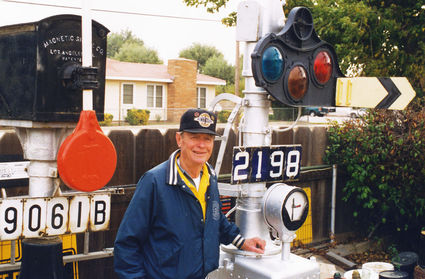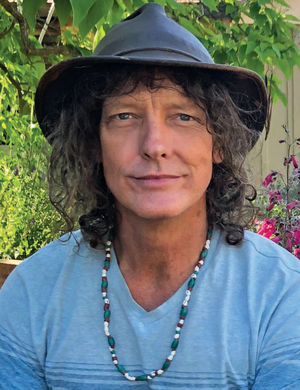From the pool hall to the track gang
Mountain Tales: First-hand stories of life in Tehachapi
November 21, 2020
I first came to Tehachapi in 1967 when I was offered a job as the assistant signal supervisor in Tehachapi. My boss in Arizona told me about the opening, and my first question was "Where the hell is Tehachapi?" He told me to find it on a map and then let him know my decision the next day. I did find out where it was, and the area looked appealing to me, so I said yes. I had been raised in Arizona, but I was actually born in California – in North Hollywood on December 23, 1929. My Dad was originally British and he was a construction supervisor for movie studios. He developed double pneumonia before there were antibiotics and he died in 1942, and my mother had already had a weakened heart, and with the grief and stress she died three months later so I was orphaned when I was 12 years old.
I was sent to live with an aunt and uncle in St. David, Arizona, which is about 16 miles west of Tombstone. My uncle worked for the Apache Powder Company, manufacturing explosives, and when I got old enough, I worked there too. In 1949, I was 19 years old, out of high school and out of work and was shooting pool in Benson. The owner of the pool hall told me that Southern Pacific was hiring nearby in Sibyl, and I didn't have a car so I had a friend drive me out there. The foreman asked me "How many of you are there?" thinking somehow that I was the spokesman for a group of laborers. I didn't want to hurt my chances for a job and figured I could round up some unemployed friends, so I told him "There will be at least three or four." And he said "Then bring your lunches and show up on Monday."
Four of us showed up and we spent the next six months with S.P., replacing older rail with newer, heavier sections. Each section was 39 feet long and weighed 1,716 pounds. We'd move them with 16 men using rail tongs. Before they had more machinery, that's what you needed for railroad work – a lot of men. We got paid $1.16 per hour, and we had to learn some Spanish – over half the crew were Mexicans, so all the instructions for raising, lowering, and moving the rail sections were in Spanish. I never learned Spanish but I can still remember all those commands.
The railroad wasn't concerned about the histories or even the identities of the laborers. On a track gang, they didn't ask for any personal records or I.D. of any kind. You could be an escaped convict or whatever. All they wanted was a full name to put on your check – they didn't care if it was your real name or not. After the six months, we were told that we were all laid off, but there was one position still available. I suggested that we flip a coin to see who got it, but since I was the only one who was having to support himself, my friends told me to take the job.
That turned out to be a good thing, because if I hadn't kept the railroad job, I probably would have gone back to work for the Apache Powder Company, at least for a little while – in 1950 my uncle and another man, doing the job I would have been doing, were killed when the nitroglycerin scale house blew up. Only three pounds of my uncle's remains were recovered. I stayed with the railroad for 40 years and retired in 1989 as an assistant signal supervisor in Tehachapi.
– Bill Stokoe
Bill Stokoe's railroad signal collection is arranged outside the Tehachapi Depot, and his personal railroad memorabilia collection makes up the bulk of the artifacts inside the depot museum. He had an encyclopedic memory, was a great friend to Tehachapi and was a hell of a man. He died after a tough battle with cancer.







